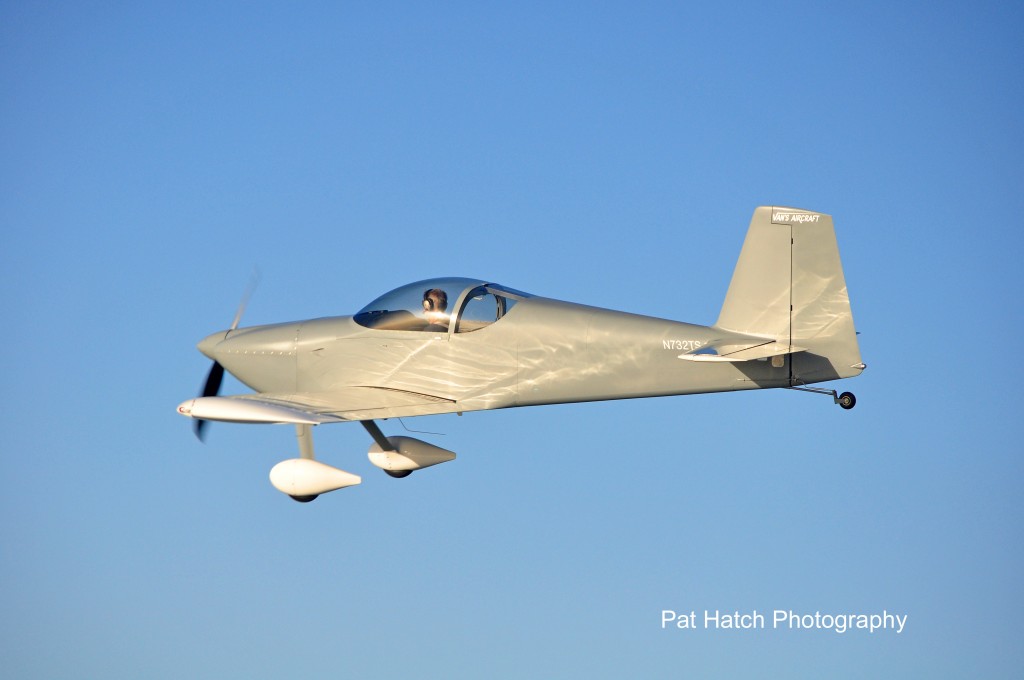Tom Savrda’s RV-7 First Flight
Well, actually today was his second flight, but since the first flight on July 22nd was cut short by an erroneous oil temperature indication, I consider his "official" first flight was today.
The oil temperature indication on his first flight was almost 300°F, but since his oil pressure was a very strong 90 psi, it was obvious that it was a calibration problem with his cockpit gauge. We had just gotten airborne and I was joining up on his wing with my RV-6 when he mentioned the high oil temperature. So we decided to make a precautionary landing and investigate the problem. And as it turned out, the problem was indeed a calibration issue and was quickly resolved. We had also inserted an accurate temperature sensor into his oil sump through the filler tube and measured the temperature to be around 195°F (very normal) right after landing, so that just confirmed that the temperature indication was indeed erroneous. Flight time was only 11 minutes because of the oil temp problem.
So today was the day. Tom wanted to get a solid hour of flight in today using high power settings—the standard way to break in a new engine.
We taxiied out to runway 4 at Vero Beach and departed in tandem, Tom first. With Tom having to use maximum power for break-in purposes, I needed to use a turning rejoin to be able to catch him. For the non-pilots, the only way to catch a faster airplane is to keep the radius of your turn less than the airplane out front. It becomes a geometry problem to comprehend how this works, just know that it does. So soon I was on his wing, but it was taking full power to stay with him, which I was able to do—barely.
Flying in formation is a skill that is acquired. It is not easy, but becomes second nature with training and experience. Now, try flying in formation using full power while continuously having to do a turning rejoin just to stay in position, at the same time snapping decent photographs with one hand while clearing for other aircraft. Not easy. Don't try this at home. Safety is paramount always, so I don't recommend doing this; however, my safety pilot decided to go play at the big fly-in at Oshkosh and left me high and dry. Needless to say the photography was very limited, but we managed to get a few decent shots. I used a 55-200mm telephoto zoom for these shots, which allowed me to move out to an extended formation position while shooting.
It was another hazy day down low today (more Sahara dust in the air) so ground shots were impossible. We were at 6,500 feet for these photos:
And finally, the obligatory "RV grin" shot, whose purpose is to capture and celebrate the exhilarating feeling one experiences at the end of the first successful flight of an airplane you built yourself.
You are probably never going to see a nicer built RV-7. This is certainly the best one I've ever seen in terms of the outright craftsmanship and attention to detail. Proof of this is that the airplane flew straight, no heavy wing, no right rudder required in cruise! You really need to go around and inspect closely to see the outstanding fit and finish of this airplane. Oh, and the engine performed flawlessly—there were no leaks at all after the flight. Not a single squawk.
Nice job, Tom!



